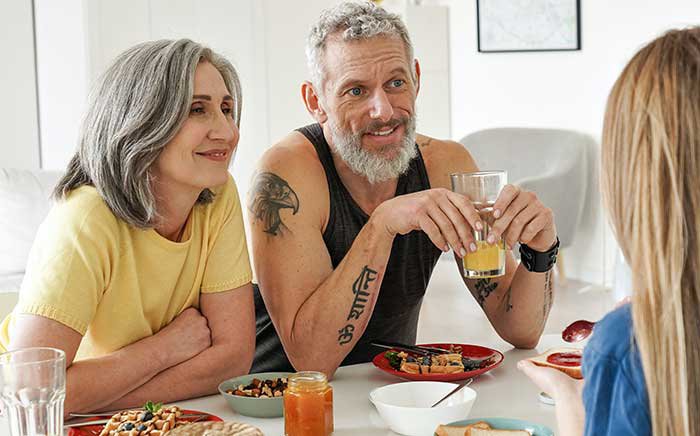Talking to young people

Some tips
Get the facts
Information about alcohol and other drugs can change over time and we now know a lot more about the long-term harmful effects. The more you know, the better equipped you’ll be to understand your young person’s challenges, what they may encounter and the potential harms to their health.
To get the facts you need, use reliable sources about alcohol and other drugs, like this guide, the ADF’s Drug Facts page, and the Positive Choices’ Parent Booklet. This way you can provide your young person with the most accurate and up-to-date information to cut through the many myths and misconceptions.
Be clear about your own beliefs
Get clear about your views on the use of alcohol and other drugs. For example, it’s up to you whether your under 18-year-old is allowed to drink or not. To help you make this decision, check out the Australian alcohol guidelines. They state the safest option for people under 18 is not to drink.1
Keep things relaxed
When you’re having conversations about alcohol and other drugs keep things casual and relaxed. You could use media stories, social media posts, song lyrics, or themes from movies or TV shows as conversation prompts. Using these prompts can make your conversations natural and part of your everyday. Remember, there’s no limit to the number of conversations you can have.
Be curious
Find out what your young person thinks about alcohol and other drugs. Ask what they’d do in different situations and listen to their opinions. By remaining open and keeping your body language and tone respectful you can encourage an open conversation. Most importantly, listen to their opinions and ensure your young person knows they can talk to you about any concerns they have – at any time.2
Focus on their health
Focus on how you care about them and want them to be healthy. Try not to use exaggerated statements about the dangers as it will make you appear less knowledgeable. Talk about why people may want to drink and use other drugs, as well as discussing the harms.
Set rules and consequences
Explain your views on alcohol and other drugs and use the facts to back them up. Establish clear rules and consequences for breaking them.
Help them to navigate tricky situations
Give your young person some strategies to help them get out of situations where they may feel pressured to use alcohol or other drugs. You could also let them know that you are always available to pick them up if they are feeling uncomfortable. See here for more information on peer pressure and how to say no.